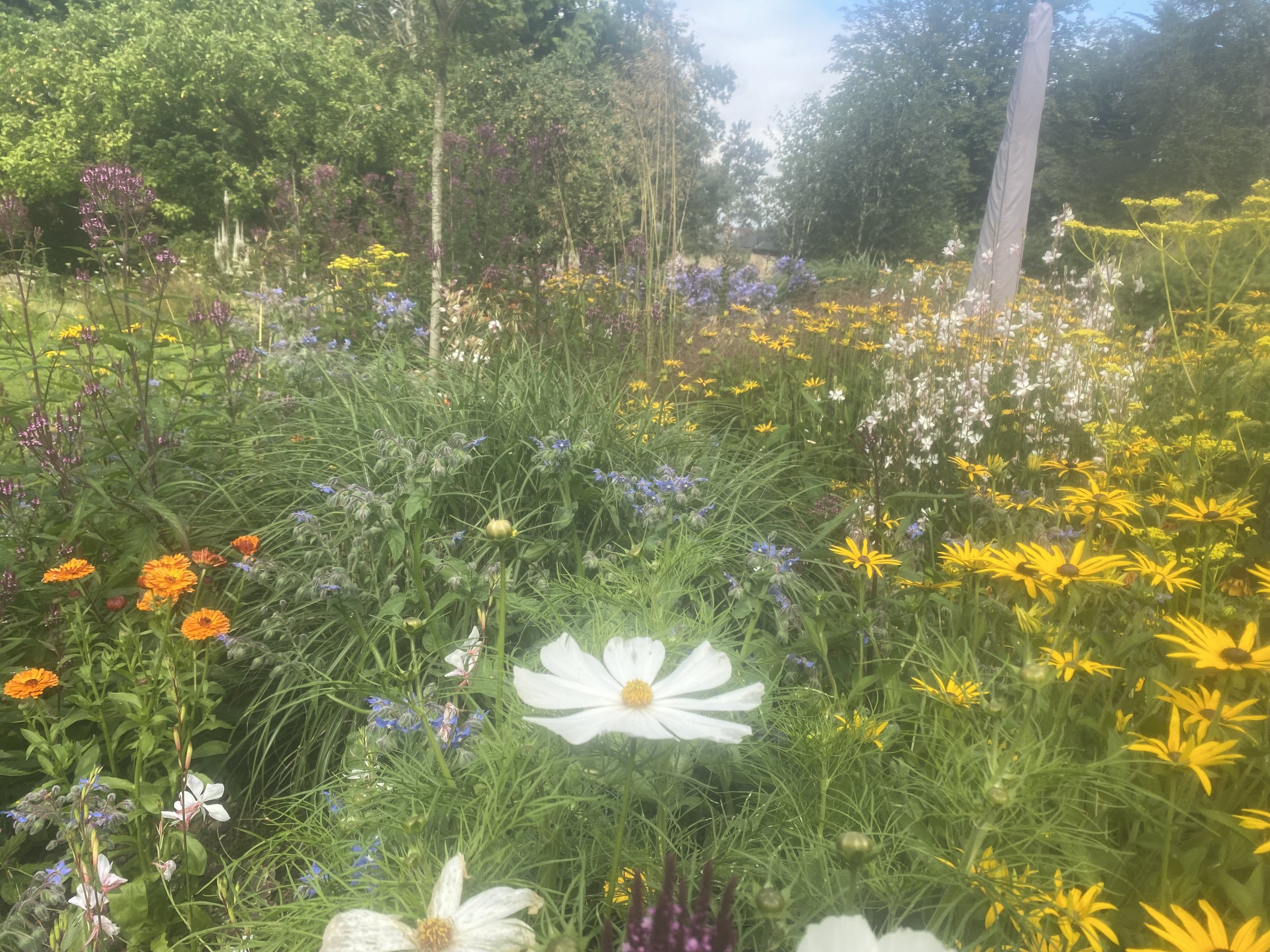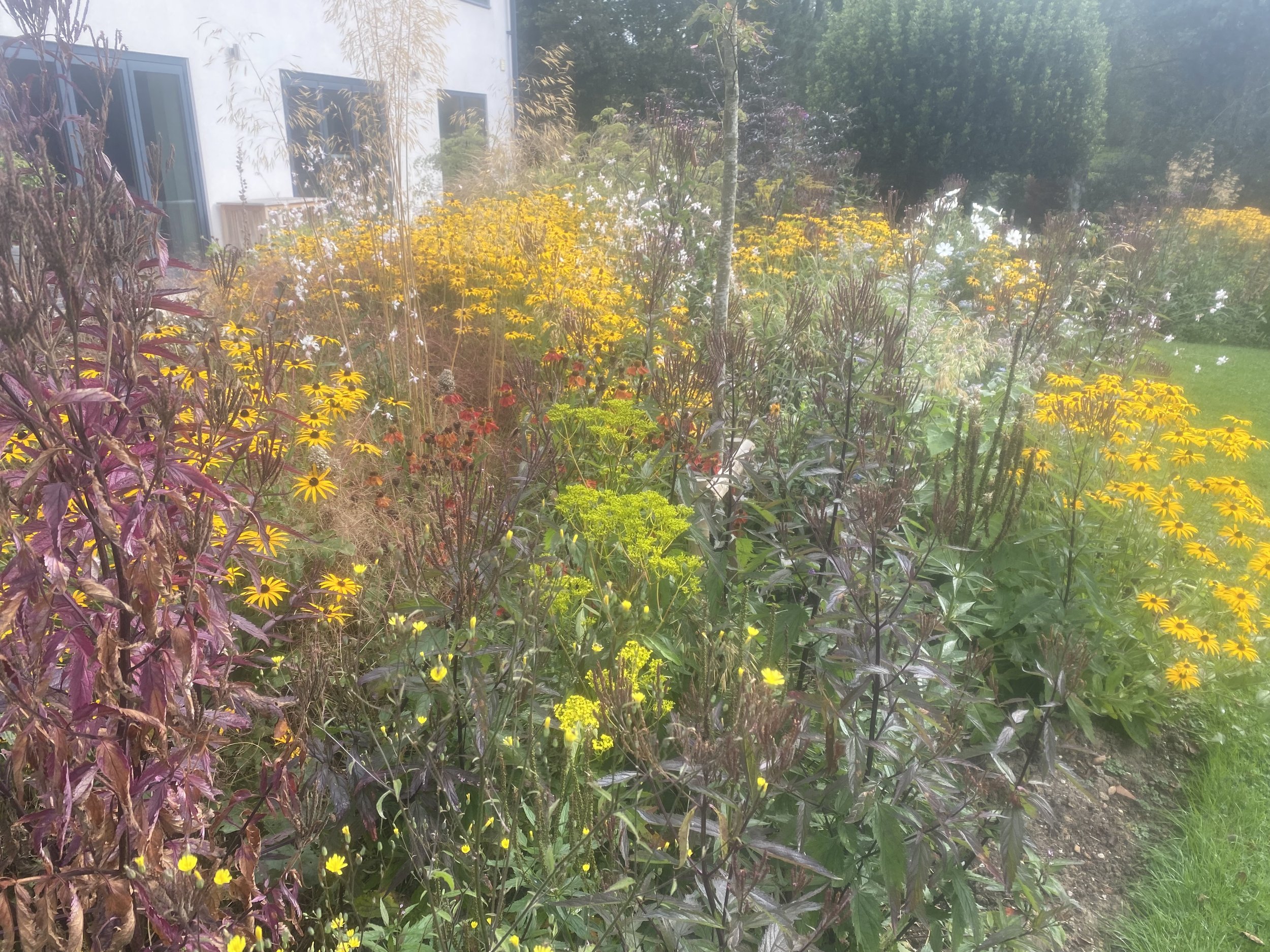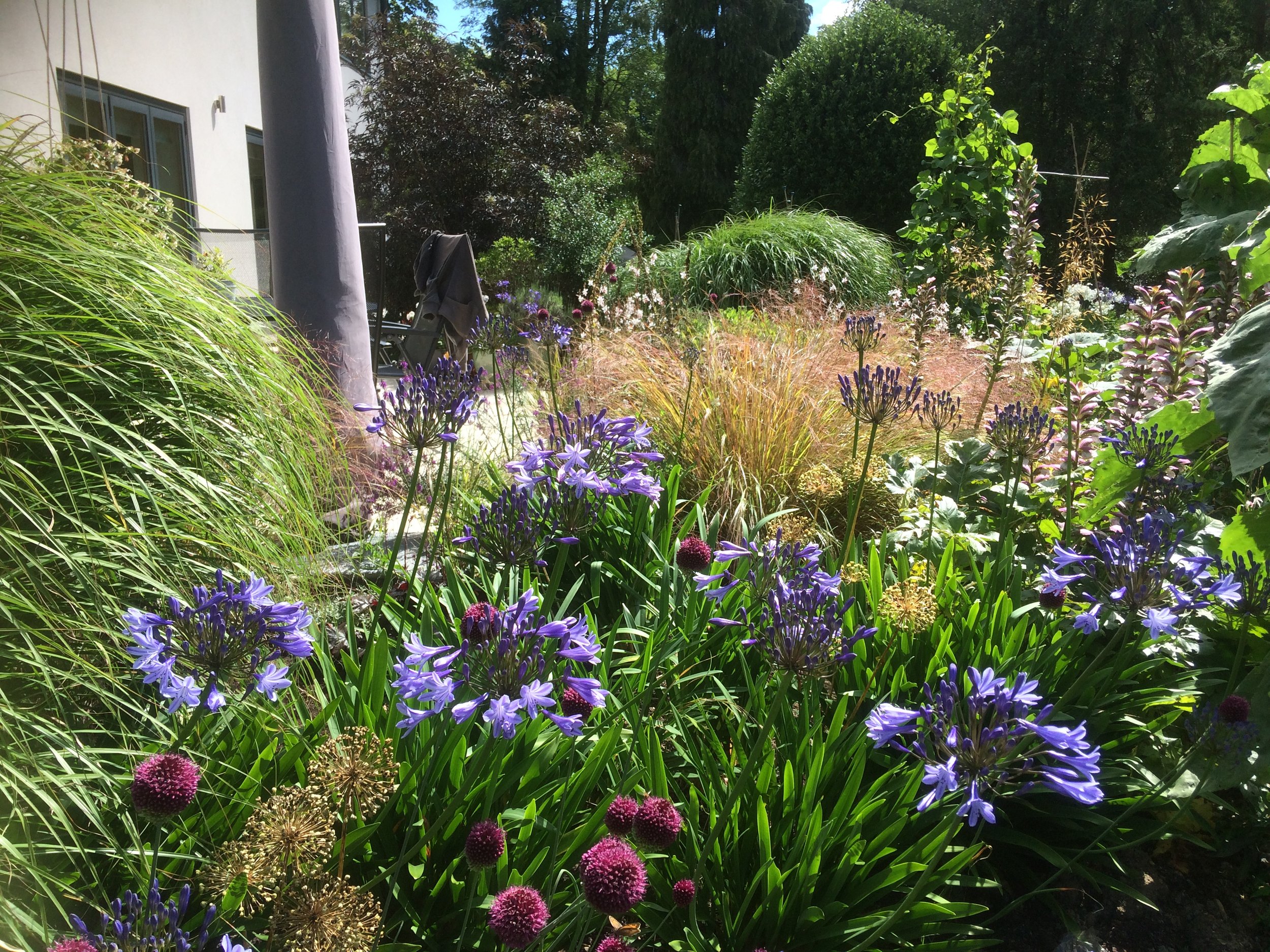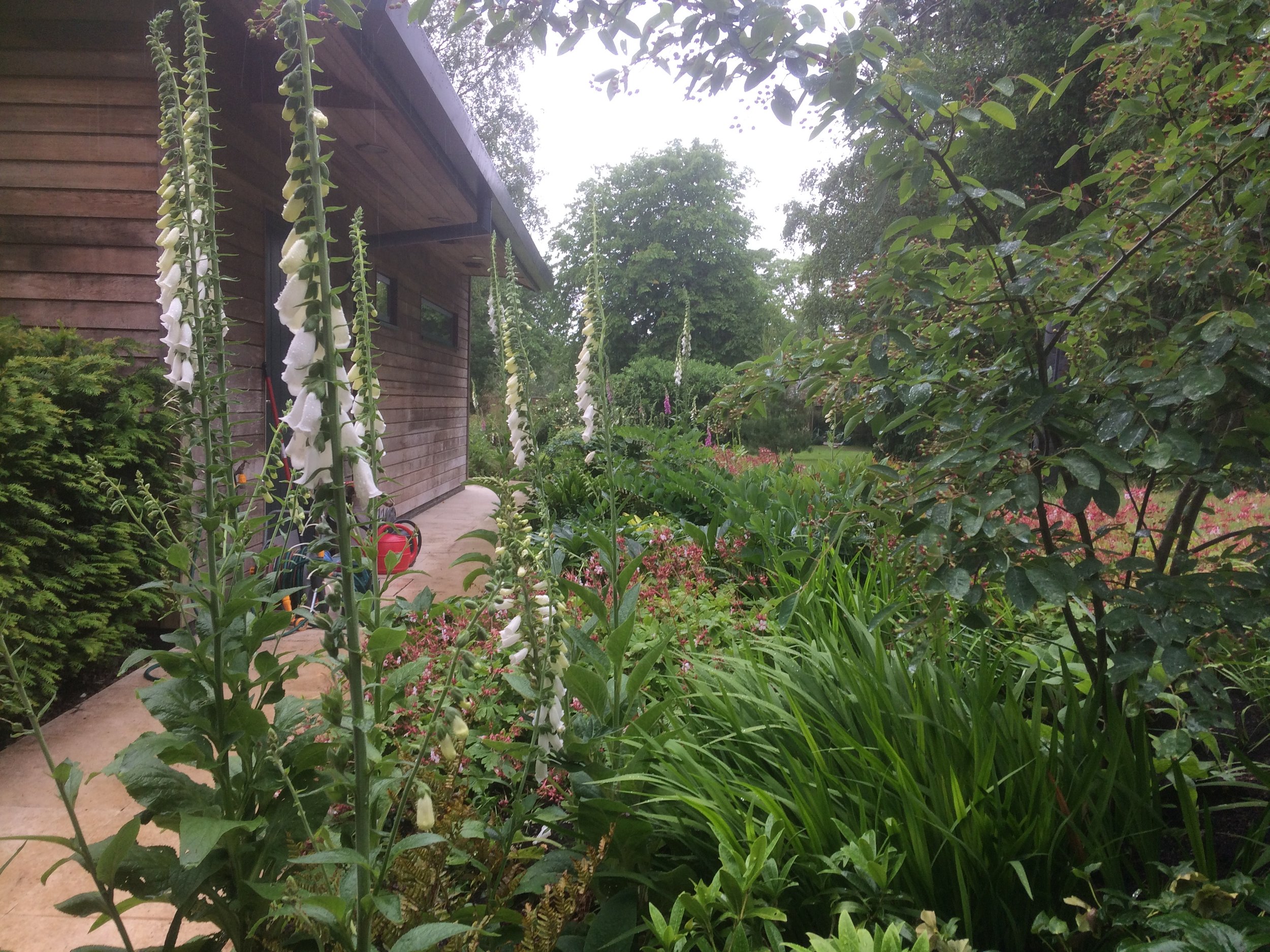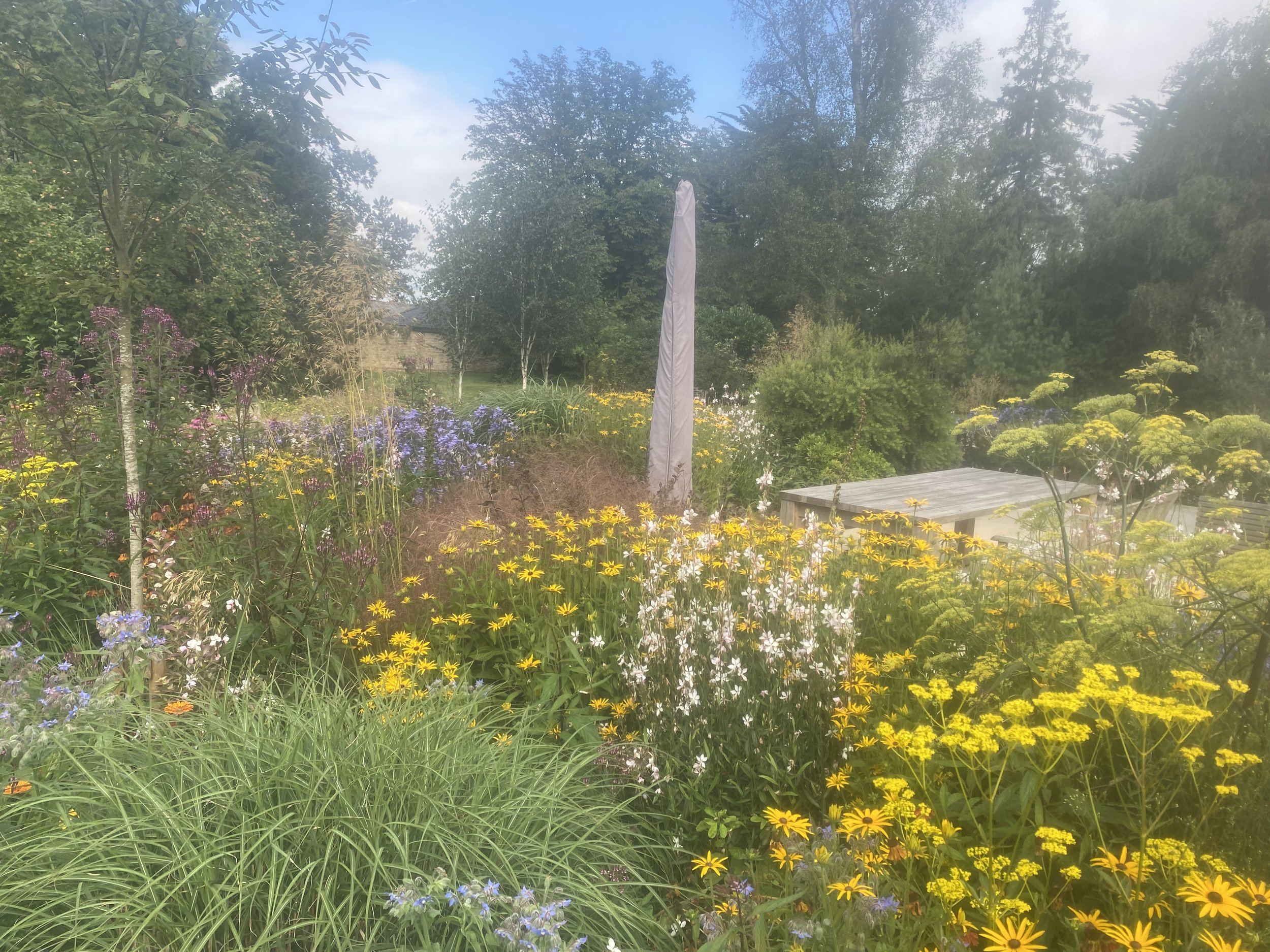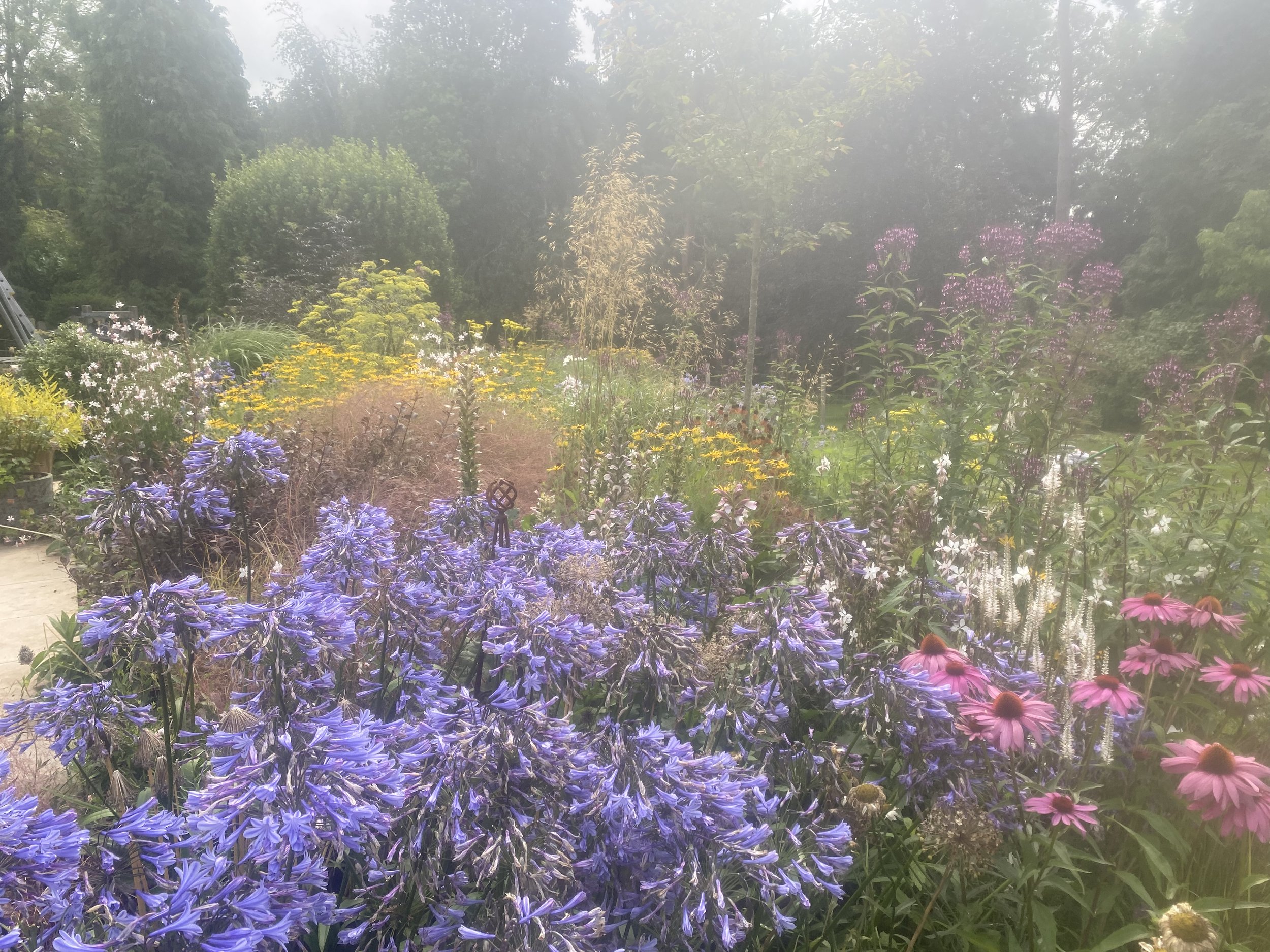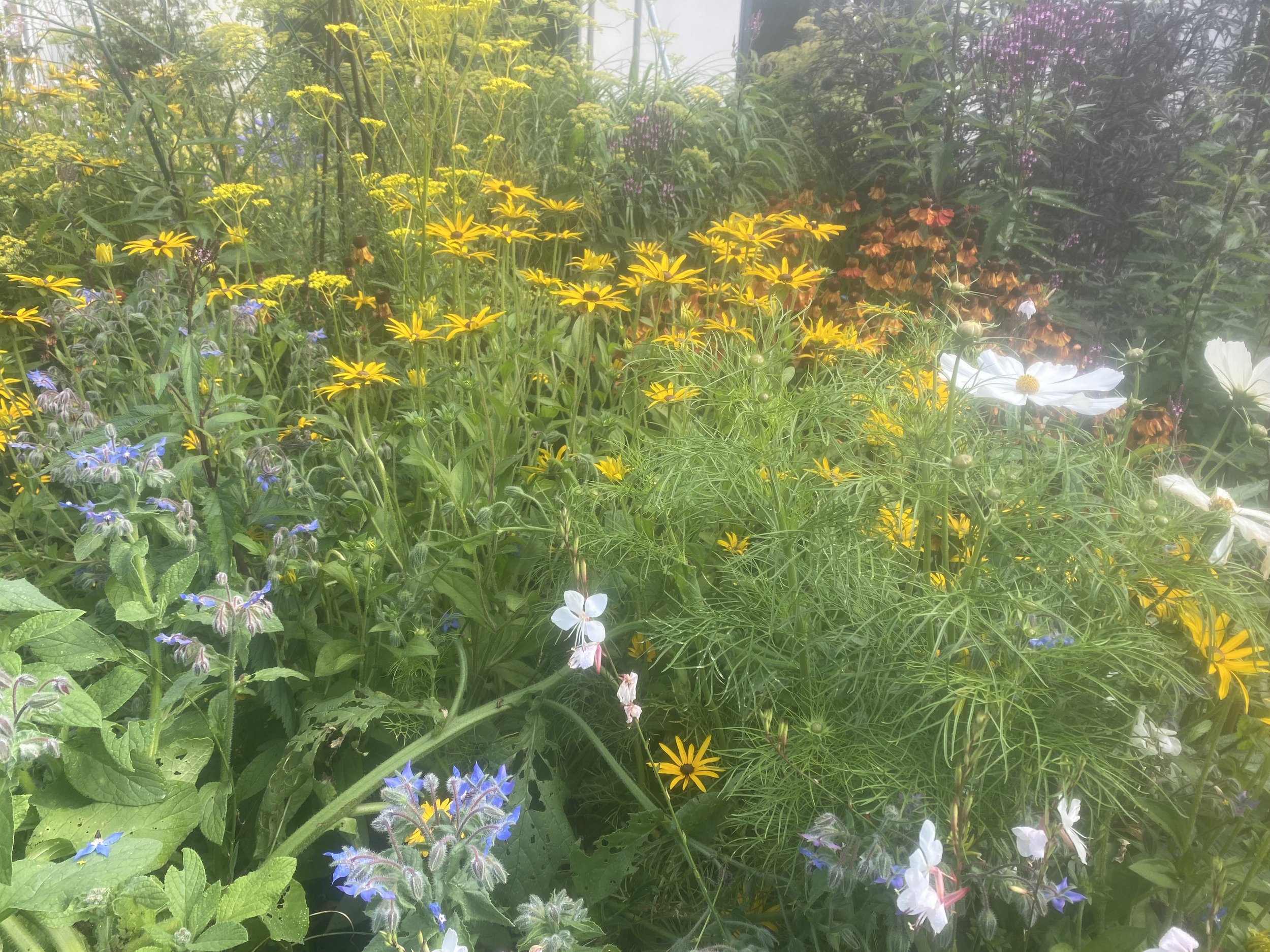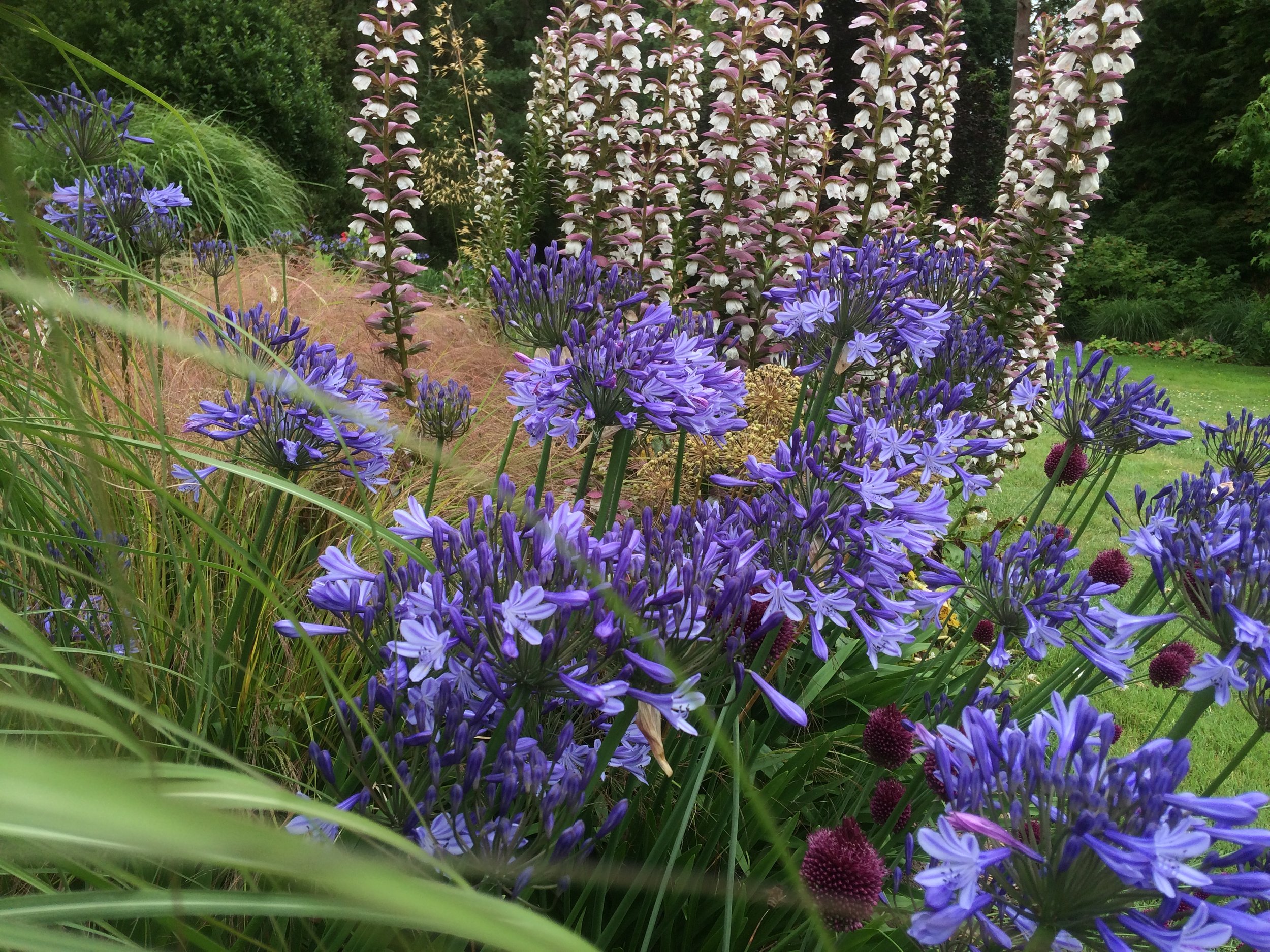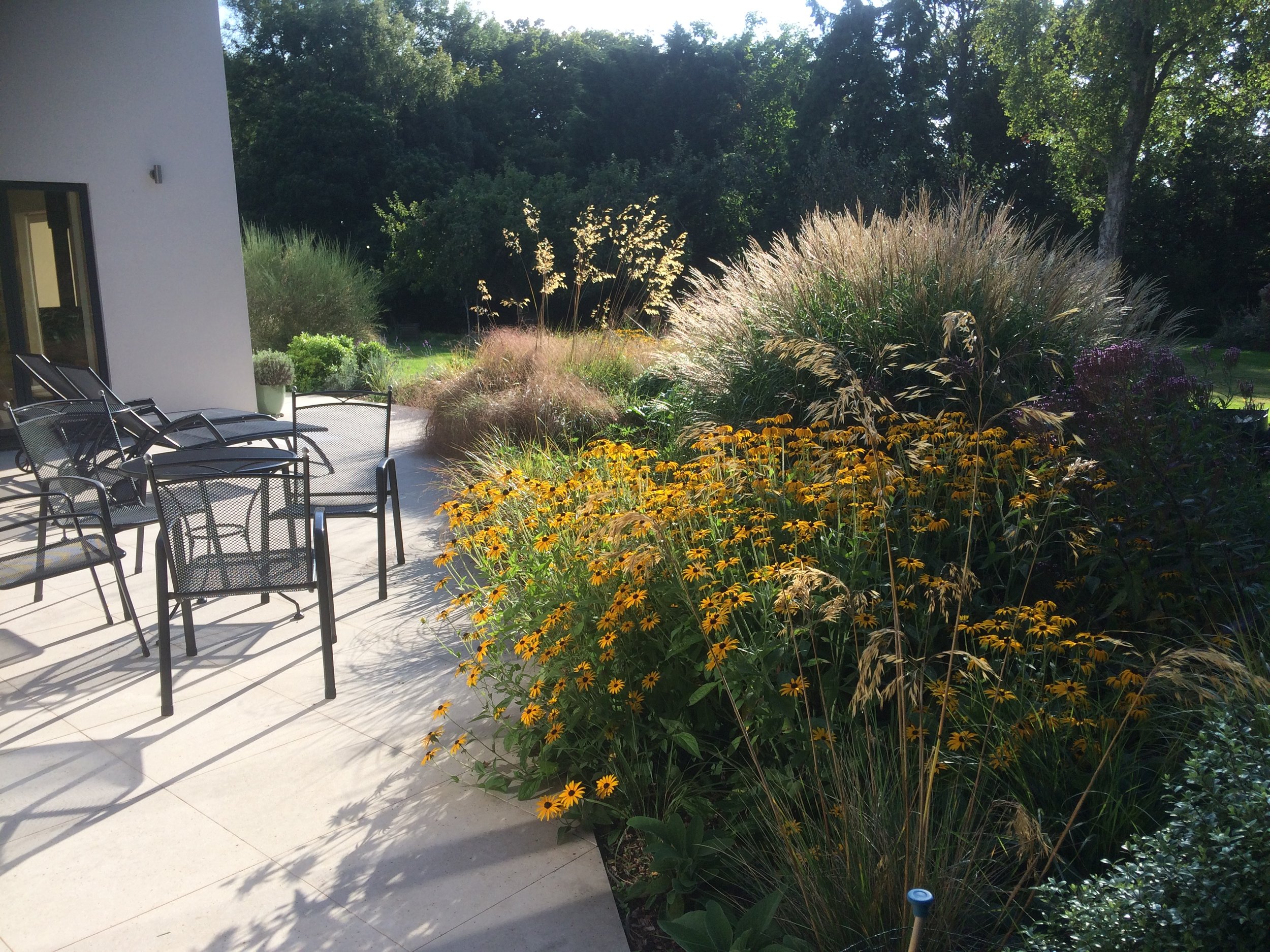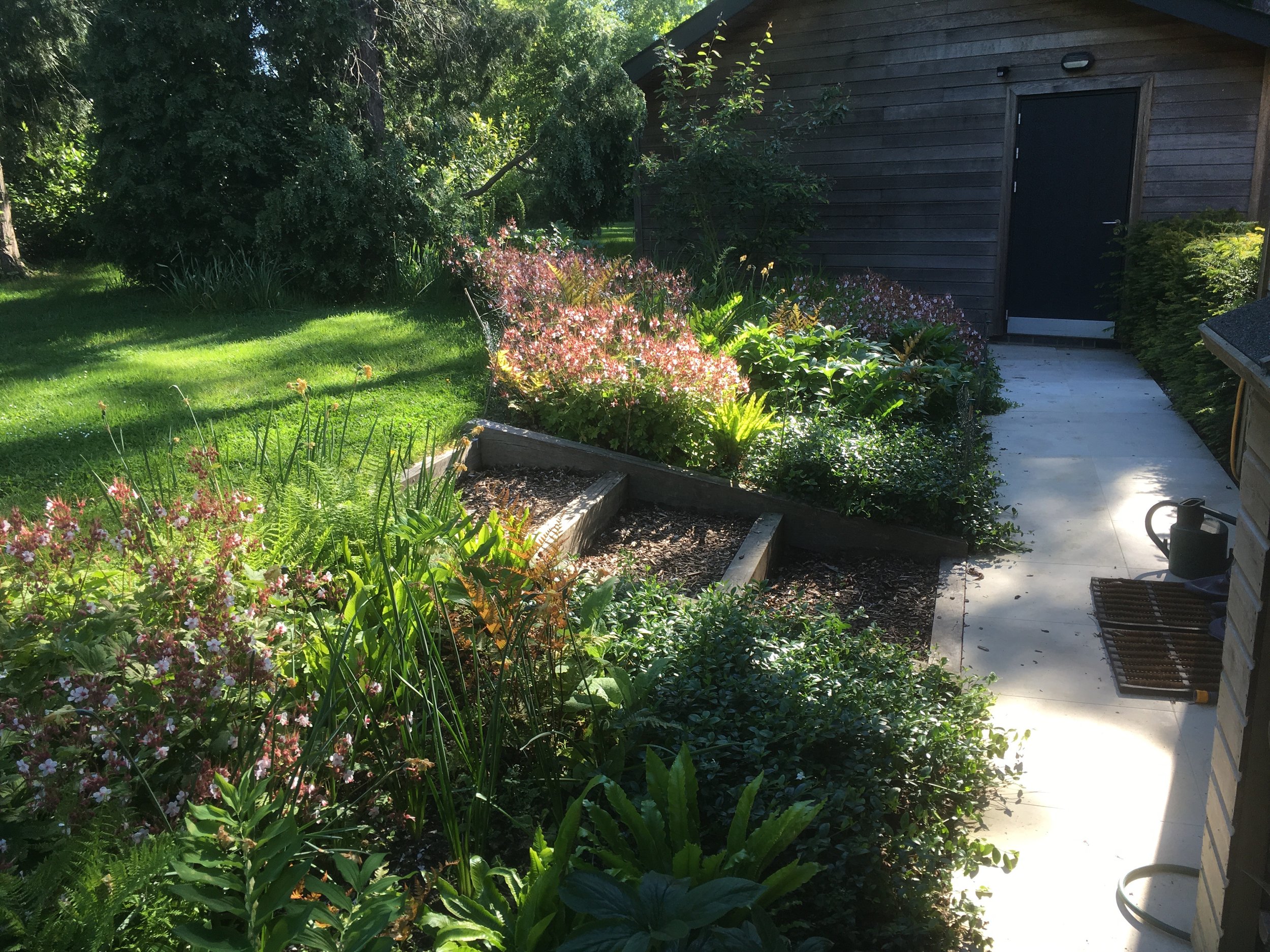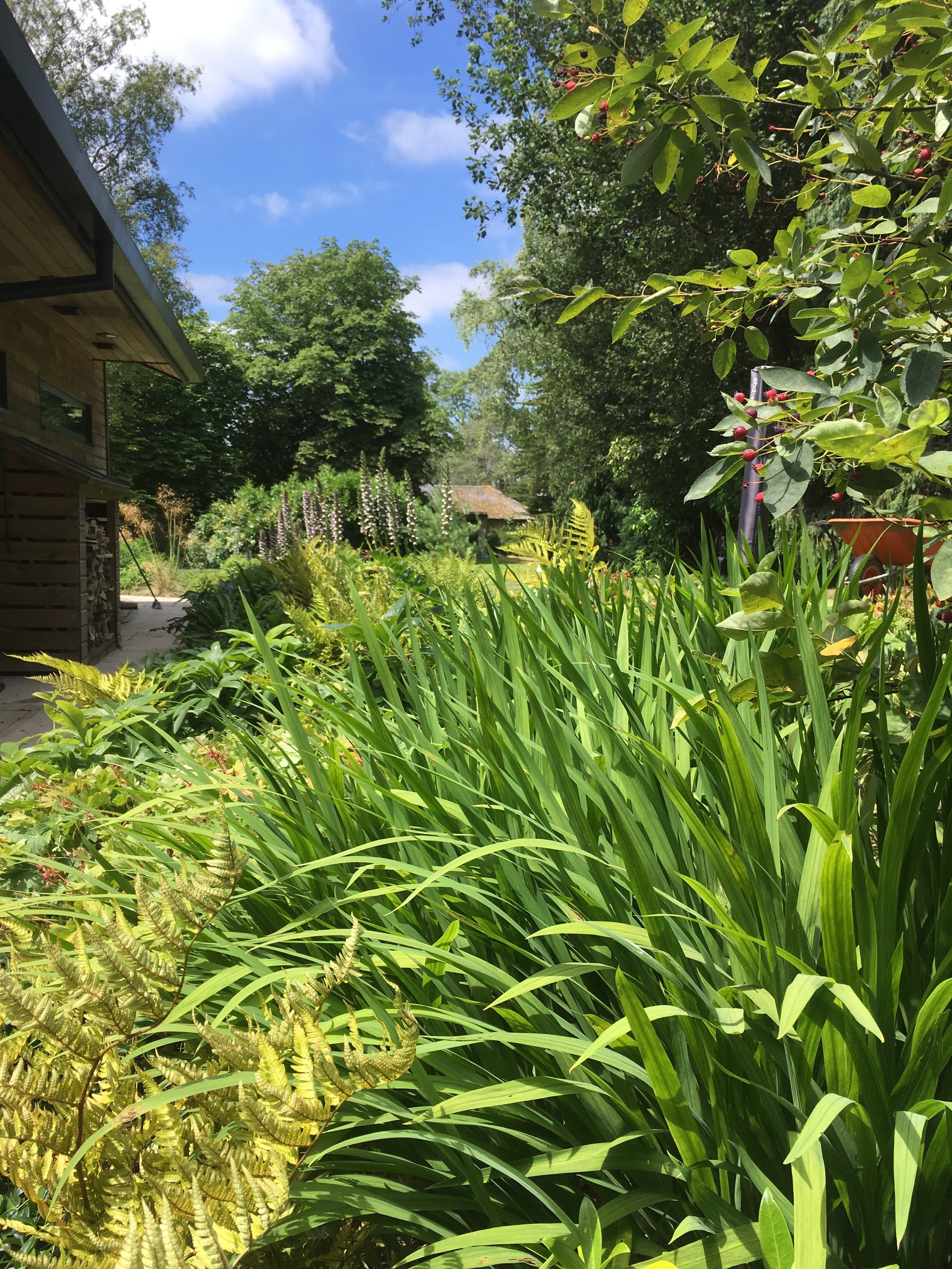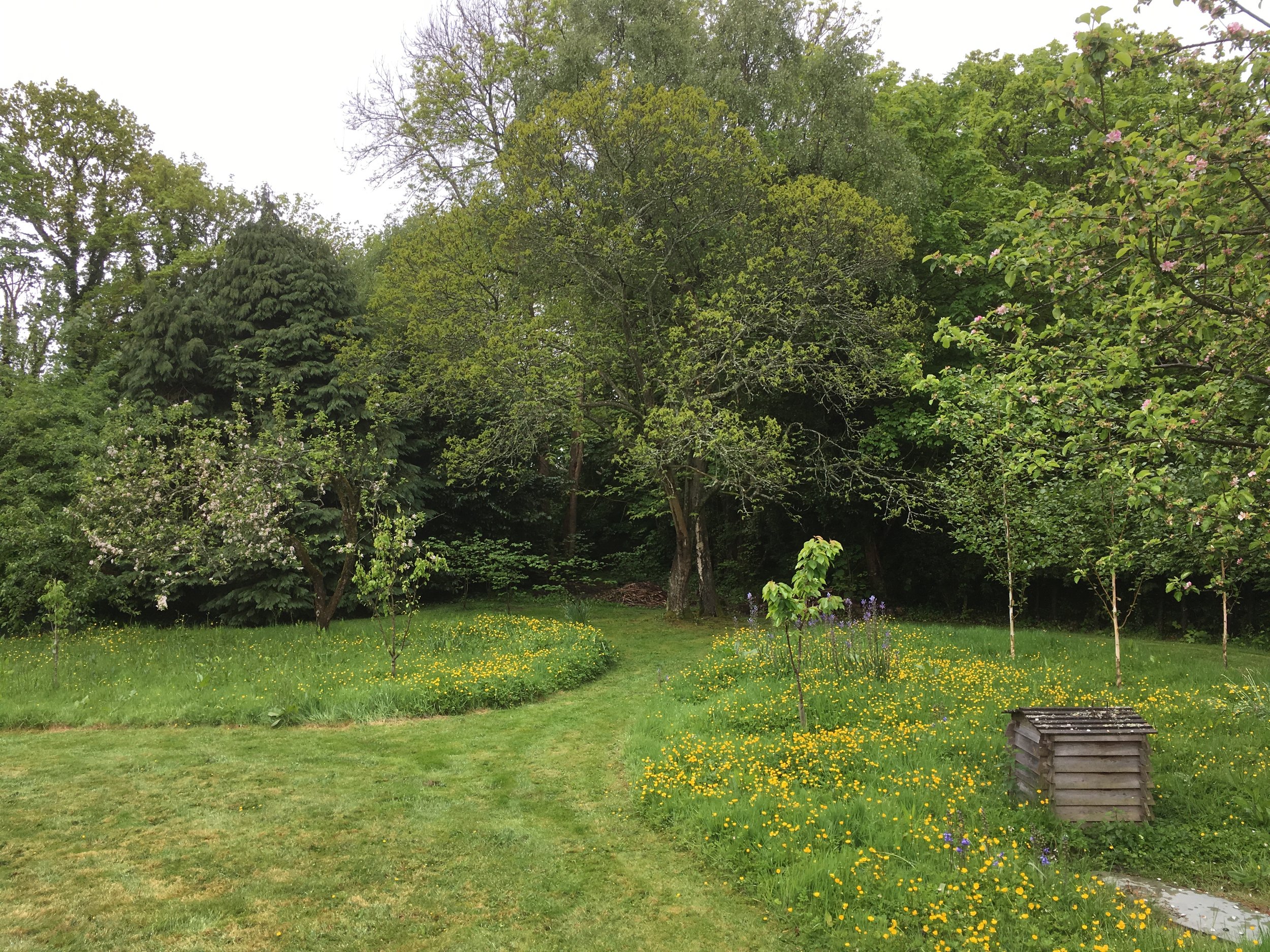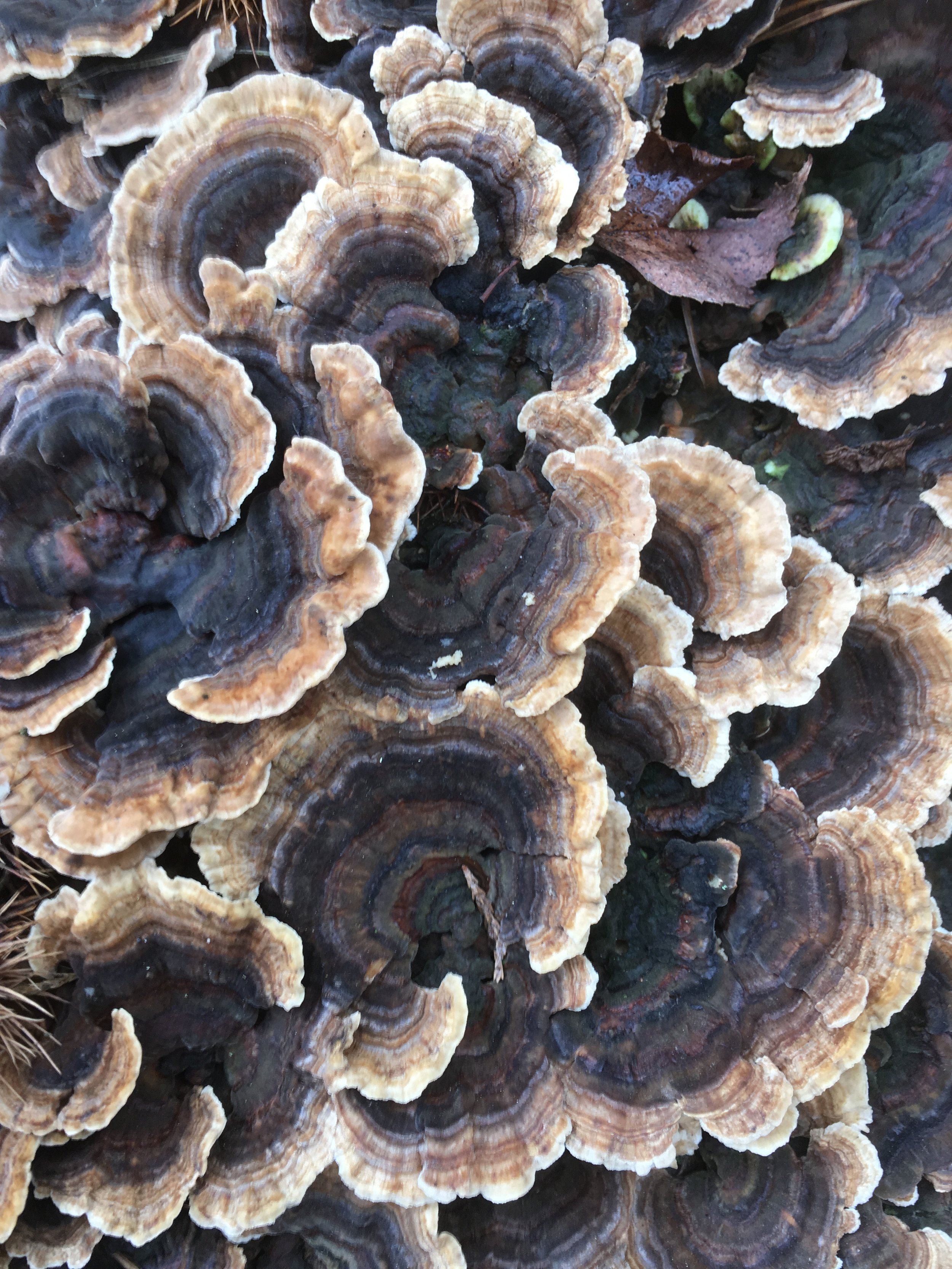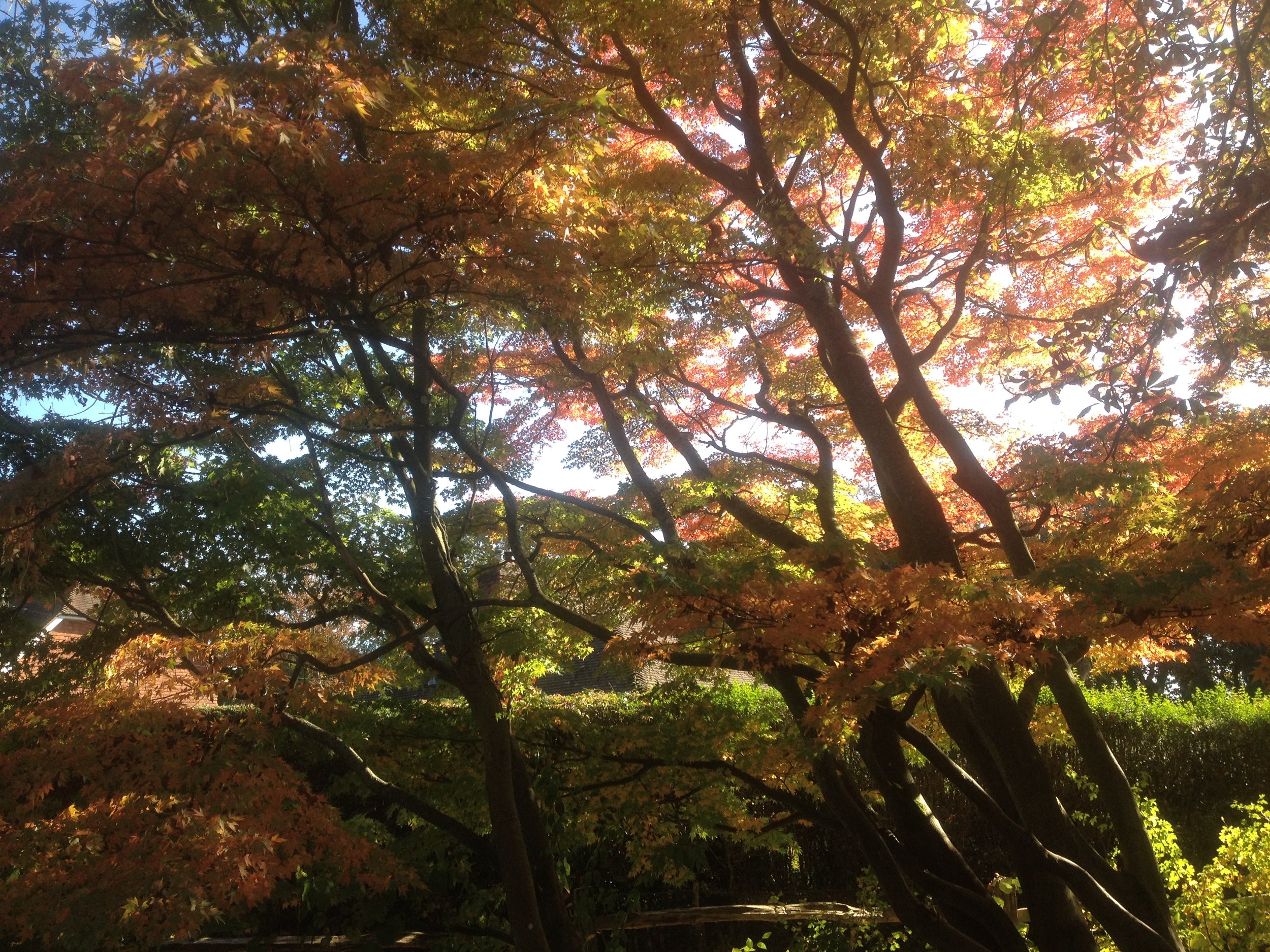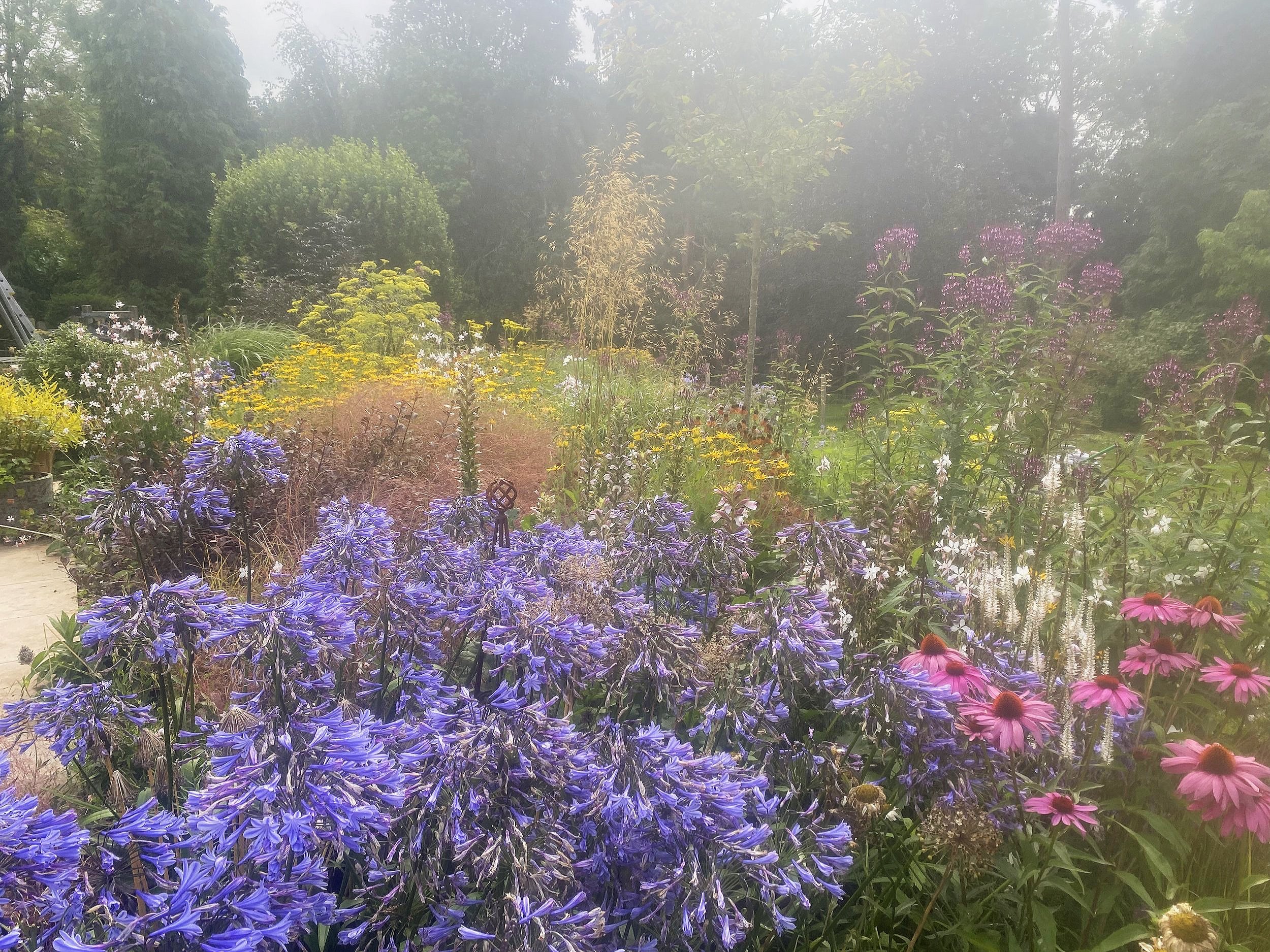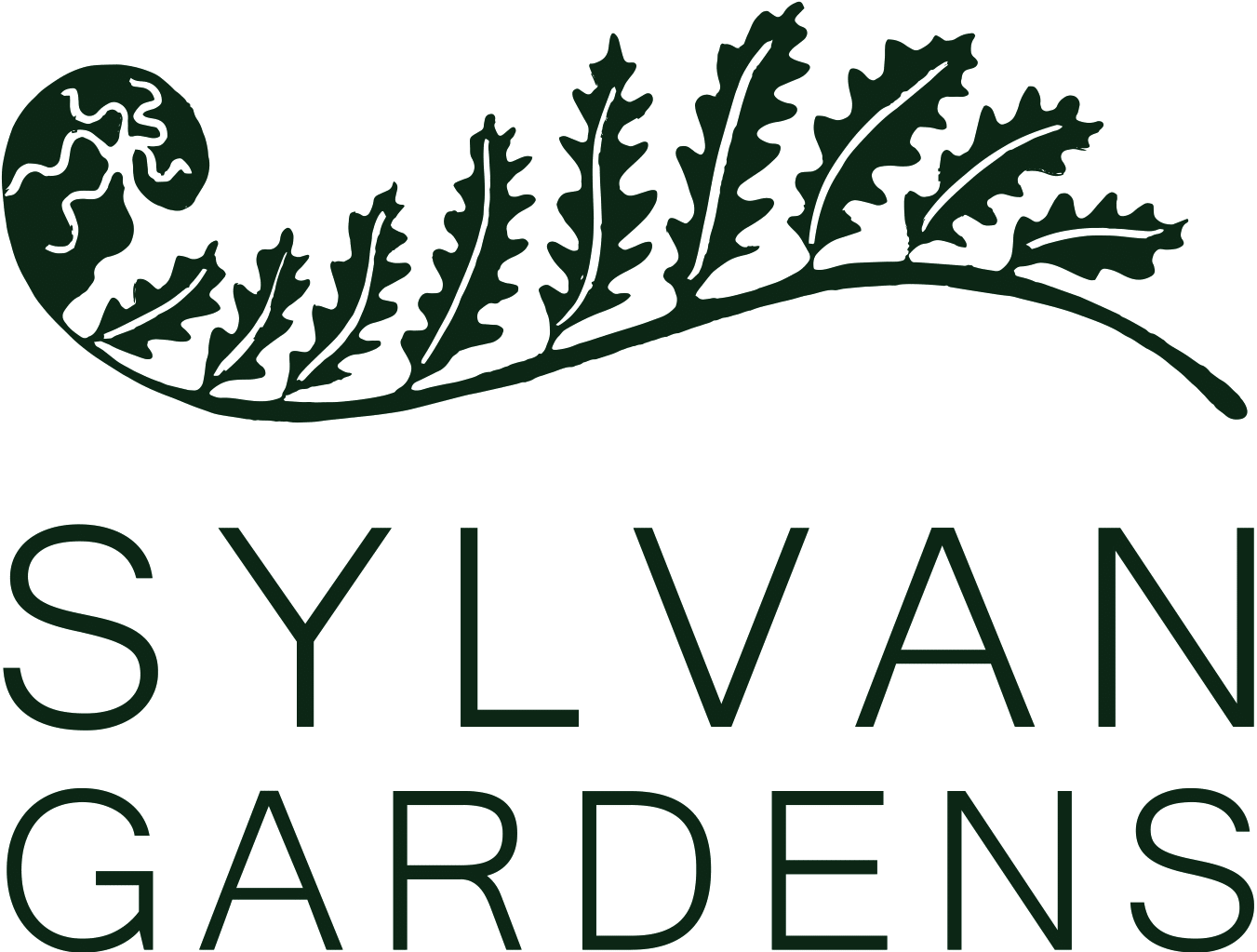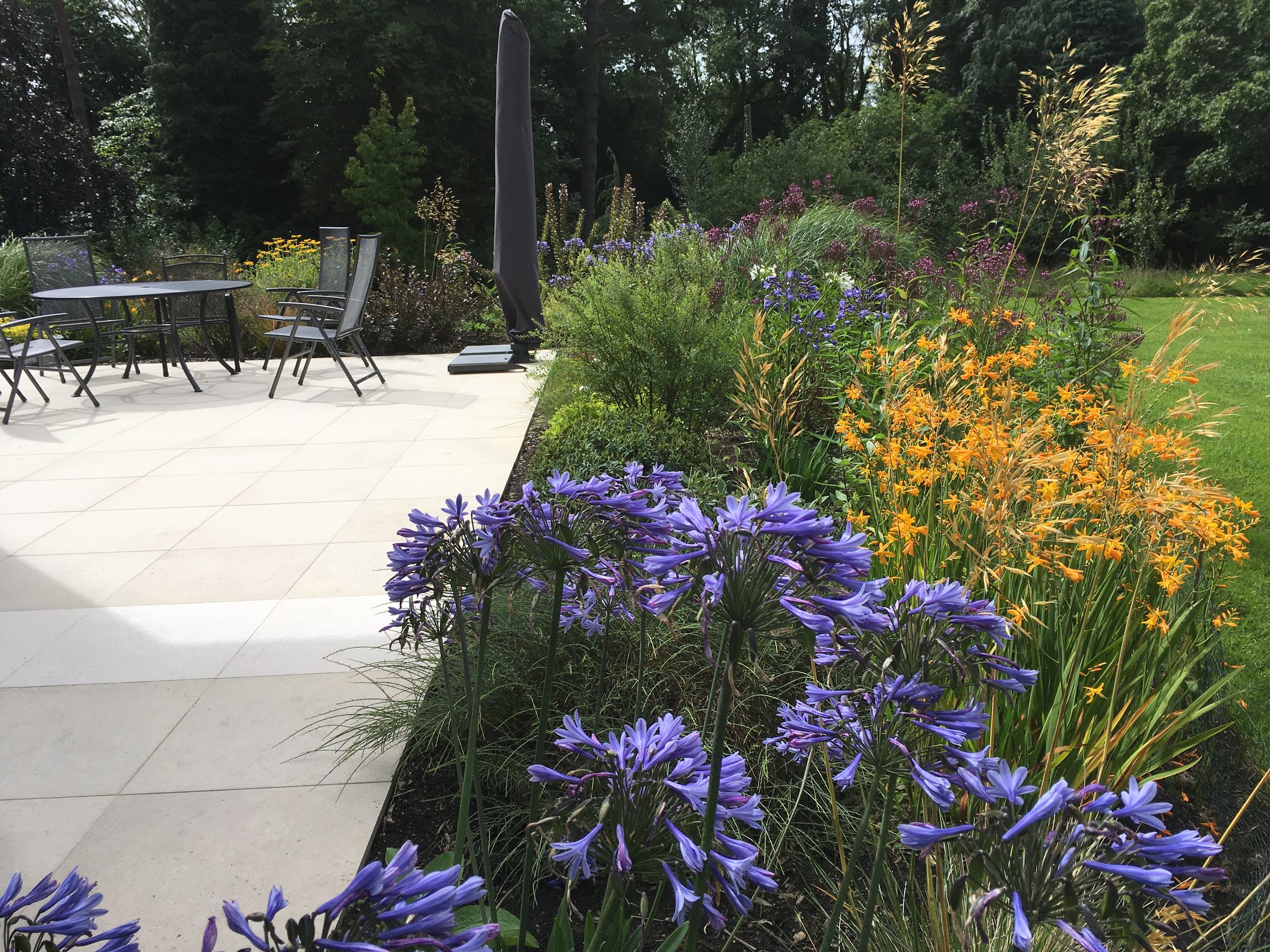From lawn to rich biodiversity
We have been working for Jo and Peter in their garden for the past 6 years. When we arrived the garden was mainly laid to lawn with some older inherited fruit trees and narrow borders to the front of the house. The house was a new build and there were pockets of building material underground, the impact of a newly laid drive, and compacted areas of heavy clay. We had problem areas of soil, oscillating from very wet to very dry.
Selecting species for these sorts of areas is one thing but being regularly on site to assess, and if necessary intervene means that there is a far greater chance of a good outcome. These areas are now planted with pollarded Salix britzensis, coppiced Cornus and Viburnum opulus with textural interest from Anemalanthe lessonia, the latter not only happy self-seeding but thriving and creating year round interest.
There was a limited amount of planting with only a few narrow borders and a disjointed, very open space. By creating wrap around curvaceous borders, with a plant palette that feels joined up but also selected for the differing aspects and conditions, the patio now feels more interesting to sit on, and creates an immersive experience. We built oak sleeper steps and some retaining walls to improve access to certain areas.
Once this was coupled with the introduction of deeper borders, to the perimeter of the garden, it began to feel less park like and more inviting to explore.
The next step began with leaving areas of longer grass, another way of creating a bit of mystery and interest as well as creating a wildlife friendly pocket of lawn and being able to see what flowering species might pop up. These were subsequently added to with Yellow Rattle, perennial wildflower mixes and even experimental pockets of robust garden perennials. The progress of which is interesting, beautiful and attracting plenty of wildlife and hundreds of frogs!
Fast forward to now, and working with the fundamentals of creative maintenance the borders have expanded, more trees have been planted and the wildflower meadow species are taking hold. We have introduced many new plant species here such as Patrinia scabiosifolia and Vebena hastata ‘Rosea’ recently partly due to the freedom and time that the creative maintenance process allows us. We can analyse over time what works, what doesn’t and what proliferates with wild abandon! We can test, trial and edit species to create very intricate effects over the season.
